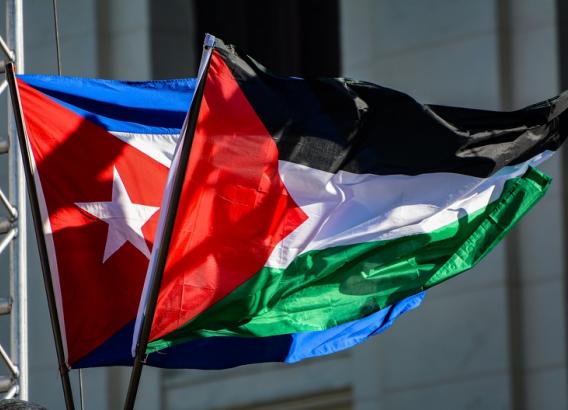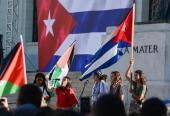Interview with René Portocarrero: About His Rich and Poetic Vision

Because time strips away memories, I recall René Portocarrero, the artist who recreated women in a thousand ways and left of her an unforgettable gallery. According to him, his Portraits of the Flora series idealized a real and captivating character from her childhood.
Without adjusting to one style and summarizing several he gave the best of his appreciated art. I interviewed him one day long ago and the image of him remained more than in my memory in my heart. I don't know if it was because of the lively interest he showed in that meeting, his kindness and, especially, the endearing gift that he valued so much: his photo of a child dressed in a carnival costume.
We spoke in his apartment in Vedado, near the Havana Malecon Avenue.

-The carnival has exerted a strong attraction on me. I don't know if it could be that, precisely, I was born on February 24, during Shrovetide time. This motivation is closely related to my childhood. I remember that they dressed me up every year. They were complicated costumes, but very well made.
-In addition, the carnival reflects the aesthetic sense of the people, their artistic expression. And although in our country there has not been an artisanal tradition, people use their imagination and fantasy in the troupes, the costumes and the floats. It's all very universal; They just mix one character with another, one era with another distant one.
His interest in painting shown since little was very well accepted by the family, which also encouraged such an early inclination. The loving aunts took the paintings of Portocarrero to the National Hall of Painting and Sculpture, who at that time would have been 12 or 14 years old. He exhibited alongside renowned artists such as Amelia Peláez, Carlos Enríquez, Lam and others.

His artistic language was nourished by Fauvism, Surrealism, Impressionism, Post-Impressionism and abstraction in its different variations. He considered himself primarily a figurative painter.
When I asked him about the importance of Cuban light in his work, he explained to me:
-For me, the sun is essential, as it sifts the colors at certain times. My favorite time is sunset, because that's when the color is at its perfect medium. I usually paint in the morning and afternoon, but there are feverish times when time doesn't really exist. My work is the sum of many styles and, without a doubt, as Carpentier has said, the baroque that can be seen in the cathedrals prevails.
-I’m influenced by Cuban artists like Amelia, Carlos Enríquez, Abella. I had direct contact with many of them because they were my teachers. They assimilated the trends of the School of Paris, but brought them to a national art.
Of course we couldn't stop talking about his famous Floras, which he so splendidly recreated.
-Flora, the woman with a hat, is also a childish image. She was strongly tied to the vision of memory since I saw her. She came to my house one day, wrapped in a well-known "affair", my father defended her. She was a very beautiful Catalan woman that I found one day full of jewels that my father kept in the safe. I painted many Floras, which the Revolution transformed in their content and which time has universalized.

Linked to the Generation of poets of Orígenes Group, he published drawings in several literary magazines such as Verbum, Espuela de Plata and Orígenes. His are the works The Masks and The Dream. He also worked as a theater designer. And for a short time he was a professor at the Free Study of Painting and Sculpture.
In 1950 he worked on decorating ceramic pieces at the Taller Experimental de Santiago de las Vegas. He made murals such as those in the Havana prison, the National Hospital and the one named History of the Antilles for the Habana Hilton Hotel, today Habana Libre.
On aspects of Afro-Cuban Santería he presented the exhibition Color of Cuba. He named Carnivals, his series inspired by the theme of those celebrations. The interior of the Cerro was highly appreciated. For his painting Homage to Trinidad he received the National Painting Prize. The Museum of Modern Art in New York acquired a collection of 27 of his angels painted in watercolors.
Portocarrero participated in the Sao Paulo Biennale in 1957 and 1963 and the Venice Biennale in 1952 and 1966. A large retrospective exhibition of his work was presented in 1967 at the National Museum of Fine Arts in Havana.

Awards received: Sambra International Prize, awarded at the Sao Paulo Biennial and, in addition, the Polish Order of Culture, Cyril and Methodius Order, awarded by the government of Bulgaria, in 1976: Félix Varela Order, Cuba, 1981, and the Aztec Eagle, highest decoration of the Mexican Republic, 1982.
The extraordinary painter René Portocarrero died in his beloved Havana on April 7, 1985. The artist remains the poetic vision of a comprehensive Cuban and universal work.
Translated by Amilkal Labañino / CubaSí Translation Staff














Add new comment